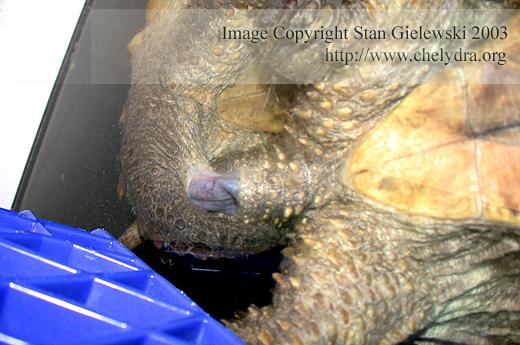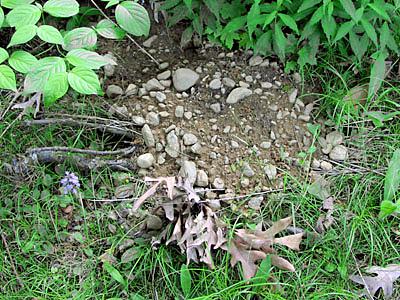In North America, snapping turtles mate from April to November and nest from late
April to October.

The male snapper will mount the carapace of a female, holding onto it firmly with the long claws of the front
and rear legs, occationally biting her on the top of her head which sometimes causes small injuries, but they are
not serious and heal soon.
Two Mexican snapping turtles during copulation. Male is the one with it's tail curved underneath the tail of a female.

Same turtles - a close up of the actual act. You can see the penis of the male (on the left) entering the female's cavity.

When 'in the mood', female snappers are also known to be quite aggressive. They will
even mimic the exact behavior of the males and mount
males, biting them and leaving temporary scars.
The nest, which may be quite a distance from the nearest water, is dug by the female with her hind legs. As the eggs are laid they are individually directed to the bottom of the nest
by one of the females hind legs.

The eggs are spherical, hardshelled and a bit more than one inch in diameter (27 - 29 mm)

The average clutch numbers about 25 eggs, but as many as 80 eggs are possible.
Hatching usually takes place after 80 to 90 days ,
and the hatchlings are almost round and slightly over one inch in length.
At first their shells are soft and
much rougher than those of adults.
The male - female ratio in the clutch depands on the sorraunding temperature: - almost 100 %
females in clutches incubated at 20 or 30 C and
- almost 100 % males at 24 to 26 C .
The ratio changes, with more males than females, at temperatures 22 C or 38 C for example.
Below are images of a nesting common snapping turtle. To see them in full size click the thumbnails. Close the new window
to come back to this page.
(photos courtesy of Larry Everett)









|